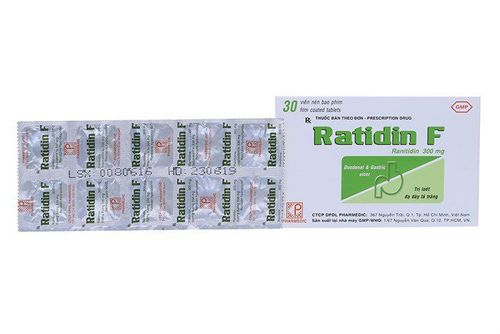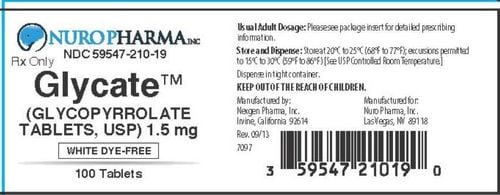This is an automatically translated article.
Sarufone has the main ingredient Sucralfate, which belongs to the group of antacids. Sarufone is used in the treatment of acute and chronic peptic ulcers. Understanding the basic information about the composition, indications, contraindications, dosage and side effects of Sarufone will help patients improve treatment results.1. What is Sarufone?
Sarufone medicine is prepared in the form of oral suspension 1g/15ml, with main ingredients including:
Active ingredient: Sucralfate content 1g/5ml. Excipients: Just enough for 1 pack of 15ml. Sucralfate is essentially an aluminum salt of Sulfate disaccharide, which has the effect of healing ulcers in the stomach and duodenum through a cell-protective mechanism. Specifically, Sucralfate creates a complex with substances including Albumin and Fibrinogen of the exudate that adheres to the ulcer, forming a barrier to prevent the protein-digesting effect of pepsin, gastric juice and bile salts. At the same time, this barrier contributes to preventing the back diffusion of H+ ions by reacting directly with the acid on the ulcer surface in the stomach - duodenum. In addition, Sucralfate suspension also stimulates the production of gastric mucus and Prostaglandin E2.
2. What are the effects of Sarufone?
Sarufone is indicated for treatment in the following cases:
Treatment of acute and chronic peptic ulcer disease. Benign gastric ulcer. Prophylaxis of gastrointestinal bleeding in stress ulcers. Mouth ulcers caused by chemotherapy or other causes in the esophagus or stomach. Esophagitis. Prophylaxis of recurrent peptic ulcer disease. However, in the following cases, the drug Sarufone is not allowed to be prescribed:
Patients who are allergic or hypersensitive to any of the components of the drug Sarufone. History of allergy to other drugs containing the active ingredient Sucralfate. History of allergy to other antacids.
3. Dosage and how to use Sarufone
How to use the drug:
Take Sarufone on an empty stomach (1 hour before eating), avoid taking the drug with food. It can be taken early in the morning or before going to bed. If you miss a dose of Sarufone, take it back as soon as possible. However, if it is almost time for your next dose of Sarufone, skip the missed dose and take your next dose at the scheduled time. Note that a double dose of Sarufone should not be taken. Dosage reference:
Usual dose: Take 1 pack (1g)/time x 2 times/day. Increase dose: Take 1 sachet (1g)/time x 4 times/day, depending on patient's response. Duration of treatment: 4 - 8 weeks. Prophylactic dose of gastric and duodenal ulcers: Take 1 pack (1g)/time x 1 time/day. Do not use more than 6 months.
4. Side effects encountered when using Sarufone
Using Sarufone in high doses or for a long time may cause side effects such as:
Common: Gastrointestinal disturbances such as constipation. Uncommon: Dry mouth, nausea, vomiting, diarrhea, abdominal bloating, dyspepsia, flatulence. Skin symptoms such as erythema, itching. Neurological symptoms such as dizziness, lightheadedness, insomnia, drowsiness. Other symptoms such as headache, back pain, musculoskeletal pain. Rare: Hypersensitivity reactions such as Quincke's edema, dyspnoea, urticaria, rhinitis, laryngospasm, large, severe facial edema may lead to anaphylaxis. Should stop the drug when detecting the above side effects or other unusual symptoms after taking Sarufone, and promptly notify the treating doctor for guidance on management.
5. Note the use of Sarufone
Caution should be used when using Sarufone in elderly patients, with severe liver and kidney dysfunction. Pregnant women: The US Food and Drug Administration (FDA) classifies the active ingredient Sucralfate in Sarufone as Group B, which is a group of drugs with low risk when used in pregnant women. Scientific evidence is still scarce. Therefore, caution should be exercised when Sarufone is used in pregnant women. Lactation: Reports have not determined whether Sucralfate passes into breast milk. Therefore, the use of Sarufone should be limited in nursing women unless the expected benefit to the mother outweighs the potential risk to the baby. Drivers or machine operators often experience unwanted effects such as dizziness, lightheadedness, insomnia, drowsiness... after taking Sarufone. Therefore, avoid using Sarufone before and during work.
6. Sarufone drug interactions
Interactions with other drugs:
Sarufone reduces the absorption of drugs such as Tetracycline, Cimetidine and Phenytoin. Sarufone drug almost reduces the absorption of many drugs taken orally, so it is necessary to use these drugs 2 hours before taking Sarufone. Above is the necessary information about the composition, indications, contraindications, dosage, usage and notes when using Sarufone. Note, Sarufone is a prescription drug, patients need to use the drug as prescribed by the doctor, absolutely do not self-treat at home.













